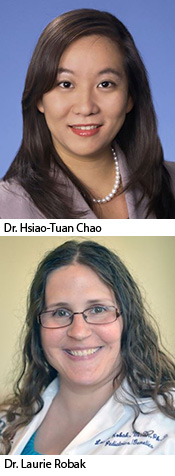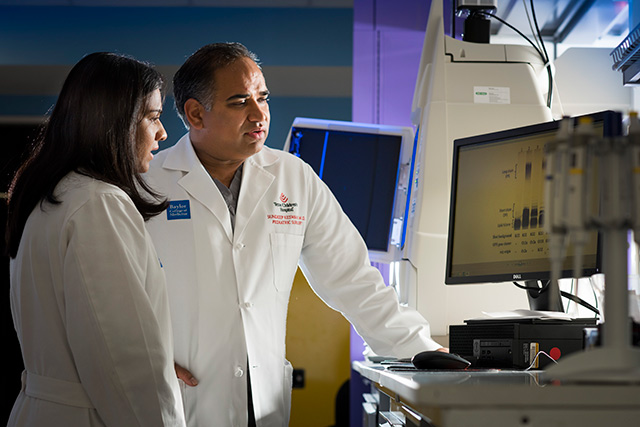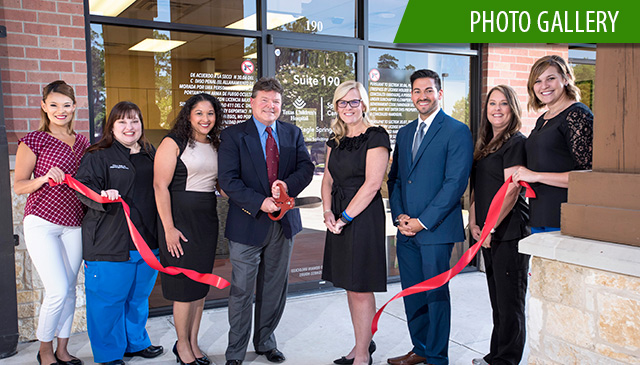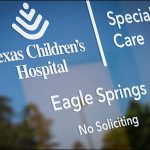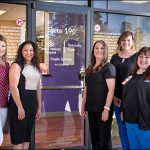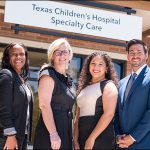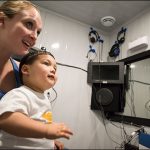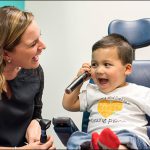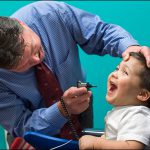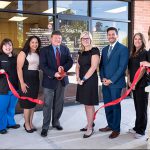When a patient is transferred to or from Texas Children’s Hospital, several wheels are set into motion to make the process run smoothly for our patients and their families.
People from various areas of the organization jump into action to make the best decision on where the patient needs to go and how they should get there.
For decades, the transfer process has prevailed using little to no technology to transfer an average of about 1,300 patients a year to and from Texas Children’s Hospital in the Medical Center, West Houston and The Woodlands. On April 19, all that changed with the opening of Texas Children’s Nerve Center, a communications hub for everyone involved in the transfer process and beyond.
“This is another great day at Texas Children’s Hospital,” said Texas Children’s President and CEO Mark A. Wallace at the center’s grand opening ceremony. “This Nerve Center is distinctive, innovative, forward thinking and a great example of the amazing leadership we have here at Texas Children’s.”
Equipped with state-of-the-art technology, the Nerve Center is located in a large, high-tech room on the third floor of Texas Children’s Pavilion for Women. Half of the room is occupied by representatives from the hospital’s security and facilities departments. The other half houses representatives from the departments of Room Management, Transport Services and Critical Care.
View photos of the Nerve Center below.
When a call about a transfer comes into the center, representatives from all teams work together to assure an efficient, rapid and accountable, transfer occurs that provides the highest quality and safest care possible for Texas Children’s high risk maternal, neonatal and pediatric population.
“We have all the people in the room we need,” said Assistant Director for Transport Services Deborah D’Ambrosio. “It’s so much easier to coordinate, be efficient and supportive to families in referring hospitals.”
One notable change made with the opening of the Nerve Center was the splitting of responsibilities for transfers and transports. Transfers deal with patients who are either coming or going to acute care and transports handle patients who are much sicker and either need a physician or a higher level of care while being moved to where they need to be. At the Nerve Center, transfer calls go to one team and transport calls go to another. The team that handles the transport cases includes a transport charge nurse and a critical care physician.
“At the Nerve Center, you have one directive and no distractions by competing interests,” said Dr. Mona McPherson, the Nerve Center’s medical director. “Your sole focus is on the transport team and getting the patient where they need to be safely and quickly.”
In addition to getting everyone in the same room and a few organizational tweaks, the biggest change to Texas Children’s transport process was the implementation of technology that enables everyone in the Never Center to do their job better.
When you step into the Nerve Center, there are many different pieces and types of technology. Each workstation has four monitors displaying information vital to the transport process. There is a huge LED display at the front of the room showing a list of patients coming and going from Texas Children’s, the location of all Texas Children’s ambulances, each of the organization’s two, soon to be three helipads, and census data. And, there are several systems operating behind the scenes that connect everyone in the room with the most up-to-date information needed to make the best decision possible about a patient coming to or leaving Texas Children’s.
“We’ve taken a department that was using very little technology to one that uses a lot in various ways, all of which are able to improve their outcome,” said Melissa Witt, a registered nurse and a senior system analyst for Texas Children’s Information Services. “We’re already seeing good results.”
During the first month the Nerve Center was launched, the Transfer Team reduced their time from dispatch to pick up by 20 minutes. It used to take the team 50 minutes to get out the door. Now it takes them 29 minutes. In addition, the number of transfers has gone up, breaking a record in May with 151.
“We’ve had more than one community ER doc say, ‘Wow, this is the easiest I’ve ever been able to get a child into Texas Children’s,” McPherson said. “And that really is our mission central here. We want to make people want to call us, not because we’re just good and give excellent care, but because it’s really easy to get a patient in here.”


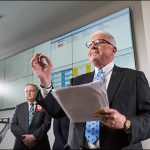
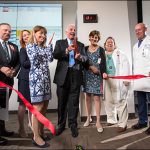
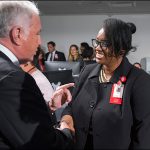
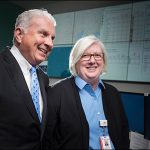



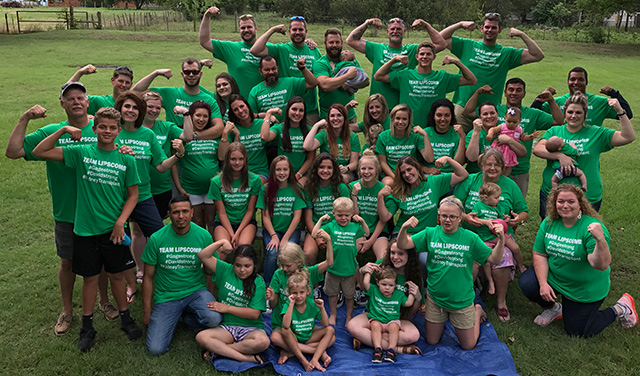
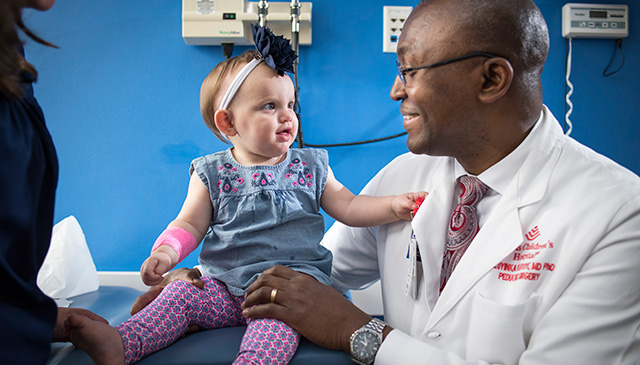 Lynlee Boemer, a miracle baby who underwent fetal surgery performed at Texas Children’s Fetal Center to remove a large tumor (Sacrococcygeal Teratoma) growing from her spine, celebrated her first birthday on June 6.
Lynlee Boemer, a miracle baby who underwent fetal surgery performed at Texas Children’s Fetal Center to remove a large tumor (Sacrococcygeal Teratoma) growing from her spine, celebrated her first birthday on June 6.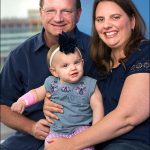
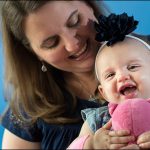
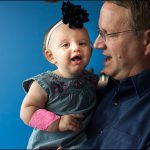
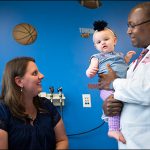
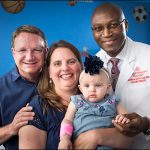
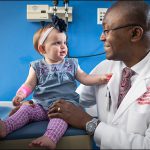
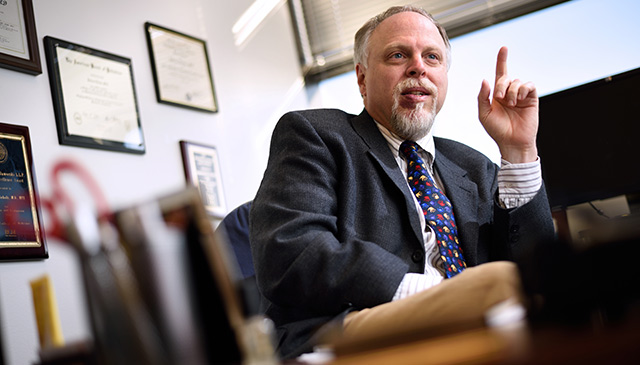 As chief of the newly created section of Public Health Pediatrics at Texas Children’s – the nation’s largest and first public health section within a children’s hospital – Dr. Christopher Greeley has devoted much of his resources and time toward developing a one-of-a-kind, community wide program aimed at child abuse prevention.
As chief of the newly created section of Public Health Pediatrics at Texas Children’s – the nation’s largest and first public health section within a children’s hospital – Dr. Christopher Greeley has devoted much of his resources and time toward developing a one-of-a-kind, community wide program aimed at child abuse prevention.